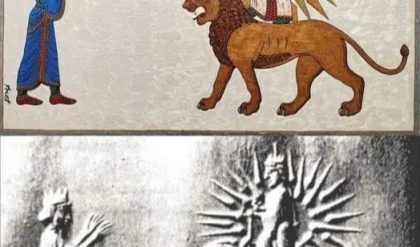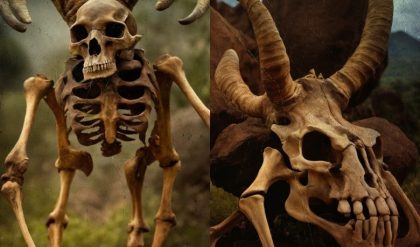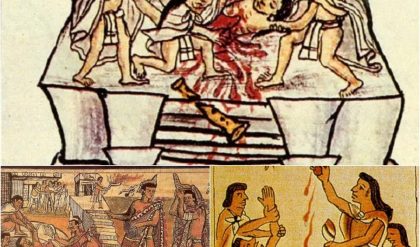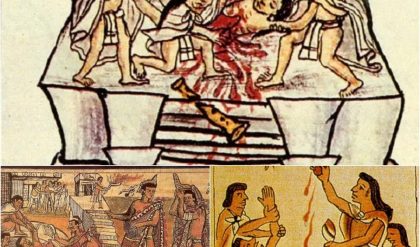For centuries, tales of mermaids—mysterious creatures that are part human and part fish—have captivated the imaginations of people around the world. Depicted as both beautiful and dangerous, these mythical beings have appeared in folklore, literature, and art, sparking wonder and fear. But could there be a kernel of truth to the legend of mermaids? Recent investigations into historical records, marine biology, and cultural anthropology may shed new light on the origins of the mermaid myth.

The Origins of the Mermaid Legend
The earliest known stories of mermaids date back to ancient civilizations, with tales of sea deities and water spirits that resemble the modern-day concept of the mermaid.
- Ancient Myths: In ancient Assyrian mythology, one of the first known mermaid figures was the goddess Atargatis, who transformed into a half-fish, half-human creature after falling in love with a mortal. Greek mythology introduced us to the sirens—dangerous sea nymphs who lured sailors to their doom with their enchanting voices. Though originally depicted as bird-women, over time, sirens and mermaids became intertwined in popular imagery.
- Global Reach: Similar stories of aquatic humanoids exist in the folklore of many cultures. In Ireland, the merrow is a creature that closely resembles the traditional mermaid, while in Japan, the ningyo is a fish-like being said to bring either fortune or disaster. These recurring legends raise questions about whether ancient peoples had common experiences that gave rise to the mermaid myth.
The Role of Sailors and Sea Explorers
During the Age of Exploration, sailors returning from long voyages brought back fantastical stories of encounters with mermaids. These accounts were often tied to the hardships of life at sea, and their depictions varied from beautiful maidens to frightening sea monsters.
- Sea Encounters: One of the most famous mermaid sightings was reported by Christopher Columbus in 1493. While sailing near the Caribbean, he claimed to have seen three mermaids rising from the water. In hindsight, it is believed that Columbus, like many sailors, may have mistaken manatees or dugongs—large marine mammals with human-like features—for mermaids.
- Survival Stories: Life at sea was perilous, and sailors often told tales to explain the mysterious and dangerous forces they encountered. Mermaids were frequently blamed for shipwrecks, drownings, and storms. These stories became a way for sailors to cope with the fear and uncertainty of the open ocean.
Biological Explanations: The Real Creatures Behind the Myth
In modern times, marine biologists have explored the possibility that the mermaid myth may have been inspired by real creatures.
- Manatees and Dugongs: These large, gentle sea mammals have been mistaken for mermaids by sailors for centuries. With their rounded bodies, flipper-like arms, and habit of floating near the surface of the water, they could easily be seen as humanoid from a distance, especially in the dim light of dawn or dusk.
- Seals and Sea Lions: Some theories suggest that the behavior of seals and sea lions, which can appear playful and human-like when swimming, may have contributed to the mermaid myth. In regions like the British Isles, where seals are common, local legends often depicted mermaids or selkies—creatures that could transform from seals into humans.
Cultural Symbolism of the Mermaid
Beyond their potential real-world origins, mermaids have always held significant symbolic meaning in human cultures.
- Duality of Nature: Mermaids embody the duality of beauty and danger, often representing the unpredictable and untamable power of the sea. In some stories, they are benevolent protectors of the ocean, while in others, they are deadly temptresses leading sailors to their demise.
- Female Empowerment and Seduction: Over time, mermaids have come to symbolize both feminine allure and independence. As seductive beings who control their own fate, mermaids reflect societal attitudes toward women’s power, autonomy, and the tension between desire and danger.
Mermaids in Modern Culture
The fascination with mermaids has not faded over time. They continue to appear in modern media, from children’s tales like The Little Mermaid to more recent films and shows that explore their darker, more mysterious origins.
- Pop Culture Phenomenon: Disney’s The Little Mermaid brought mermaids back into the spotlight in the late 20th century, presenting them as innocent and adventurous creatures. However, contemporary films and literature often reimagine mermaids as darker, more complex beings, reflecting the tension between their beauty and their potential for destruction.
- Scientific Inquiry: Even today, people remain fascinated by the possibility of mermaids. In 2012, a documentary-style program called Mermaids: The Body Found aired on Animal Planet, reigniting interest in the legend by suggesting that mermaids might have evolved from early human ancestors. Although the program was fictional, it sparked widespread discussion and curiosity.
The Truth Behind the Myth
So, what is the true origin of the mermaid legend? While it’s unlikely that mermaids, as traditionally depicted, ever existed, the myth is deeply rooted in human imagination and the mystery of the ocean. The combination of misidentified marine creatures, cultural symbolism, and the allure of the unknown has kept the legend alive for centuries.
Conclusion: The Enduring Legacy of Mermaids
Whether they are viewed as symbols of danger, beauty, or mystery, mermaids remain one of the most enduring and captivating legends in human history. While the true origins of these aquatic beings may be a mix of fact and fiction, their presence in global mythology continues to inspire wonder. As we explore the depths of the sea and our own imagination, the legend of the mermaid will undoubtedly swim on for generations to come.





